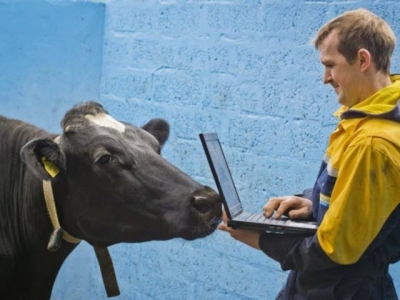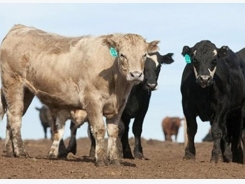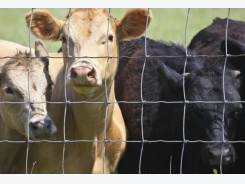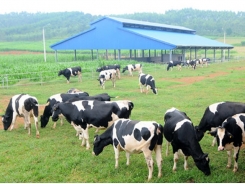5 Mistakes You Dont Want to Make When Choosing a Cow Monitoring System

You're aware that the inability to monitor health and fertility on your farm round-the -clock is costing your farm. You've decided to proactively start comparing different cow monitoring systems, but a part of you is concerned that you might make a mistake by investing in the wrong one.
How can you make sure you'll invest in the right solution for your modern dairy farm? We've listed in this post five mistakes to avoid making when choosing a cow monitoring system so you'll make the right choice for your operation.
1. The heat detection rate isn't accurate enough.
Maybe you've consciously chosen to upgrade your system in order to increase your fertility performance. Now you've realized the system you chose isn't maximizing your pregnancy rate or optimizing your calving interval.
Here's a handy formula to keep in mind when calculating your pregnancy rate:

For example, consider the average conception rate to be around 33%. With two different cow monitoring systems and a difference of 9% in the heat detection rate, the pregnancy rate can be increased by 3%.

This might not seem significant at first, but that can translate to $48 per cow per year, and on a farm with 1,000 cows, that means choosing the wrong cow monitoring system can cost you $48,000 per year![i]
2. The system monitors estrus, but not health, rumination or nutritional data.
Accurate estrus detection can save you money, but damages from various diseases in the dairy herd can also total several hundred dollars per cow per year on average. The best prevention is early detection and early treatment to allow the farmer to reduce these damages. The same for welfare issues that affect the entire herd or certain groups. A good cow monitoring system can detect these issues early on, with good accuracy.
For example – a cow may deviate in her rumination patterns due to various reasons, some of which are related to health. She may also deviate in her eating behavior. But farmers should be especially aware when a cow deviates in both rumination and eating behavior -- in most such cases she is really sick!! The most effective cow monitoring systems monitor more than one parameter, since health, nutrition and fertility are essentially intertwined. Some systems monitor health or rumination, but a system that monitors both can pinpoint health problems to a greater degree of certainty, with far fewer false positives.
Accuracy of health monitoring in the herd is a key success factor for the farmer, especially for those who are not willing to spend time on checking false positive health alerts. In many cases farmers stop reading the sick cow lists of systems that produce a high level of false positive alerts.
3. The system isn't low maintenance.
Some systems rely on continuous internet connection, and aren't really able to guarantee 24/7 availability. Others don't offer remote service, so in the event of technical problems recovery time can be rather long. Some systems have sensors for the animals that require a lot of maintenance, that often fall and need to be remounted.
You also need to think about where your data is being backed up. Is it on the cloud, or just a local backup to your farm PC? It's a lot easier to be able to obtain your data at any time or place rather than lugging around a laptop or having to constantly get to your farm PC.
Also, make sure that service isn't limited but rather available whenever you need it.
When comparing systems, we recommend thoroughly inquiring about these issues before selecting the right cow monitoring system for your modern dairy farm. You want to be surprised by how easy it is to use and maintain, not by how high maintenance it is!
4. The cow monitoring system isn't user-friendly for you or your cows.

Neck collars are reliable, easy to mount, and comfortable for the cow
Beware of cow monitoring solutions that require inordinate amounts of time installing sensors on a cow or constantly remounting sensors. It shouldn't take more than a minute to mount a sensor on a restrained cow, and it shouldn't need accurate positioning in order to work. But you need to investigate beyond these first steps as well.
Check that your system has long-range capabilities and long-life batteries. Make sure that your data can be accessed from a mobile device, even when you're away from the farm. In addition, the software should be intuitive. It shouldn't take more than 30 minutes to learn to use.
5. The system doesn't suit your future business goals.
Maybe you need to lower your calf morbidity, and the system you chose only monitors heat. When selecting a cow monitoring system, you need to be very clear on your goals. What do you wish to accomplish? If you want to lower your calf morbidity, you should focus on a system designed to alert for dystocia (prolonged calving).
Also keep in mind that if your farm is planning for significant growth, you'll want a scalable solution that can later be integrated into a dairy herd management system and combined with precise sensor data from milk meters and milk analyzers and your dairy farm management software. This combined data gives the most accurate snapshot of your dairy farm at any particular moment, ensuring that you're making the best business decisions.
The last thing you want to have to do is replace your system again to keep up with the latest technological developments.
Asking the right questions now will help you choose the right system that will save you time and expense in the long-term, ensuring the most successful cow monitoring for your dairy operation.
Related news
Tools

Phối trộn thức ăn chăn nuôi

Pha dung dịch thủy canh

Định mức cho tôm ăn

Phối trộn phân bón NPK

Xác định tỷ lệ tôm sống

Chuyển đổi đơn vị phân bón

Xác định công suất sục khí

Chuyển đổi đơn vị tôm

Tính diện tích nhà kính

Tính thể tích ao




 N&H TOPLINE: New methods predict methane emissions of…
N&H TOPLINE: New methods predict methane emissions of…  Protein and Amino Acid Requirements for Close-Up Dry…
Protein and Amino Acid Requirements for Close-Up Dry…